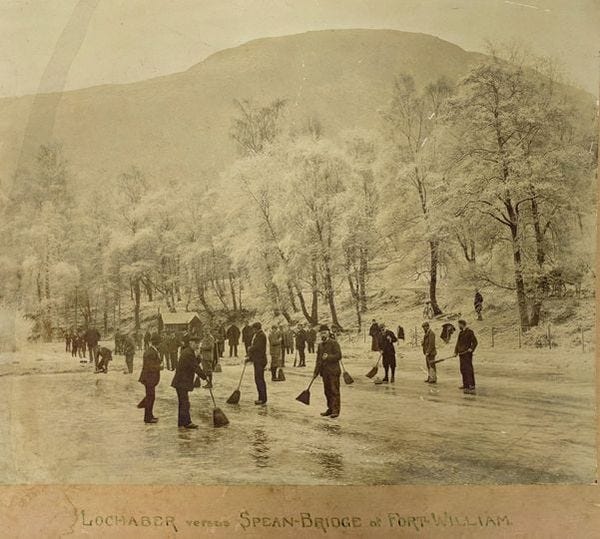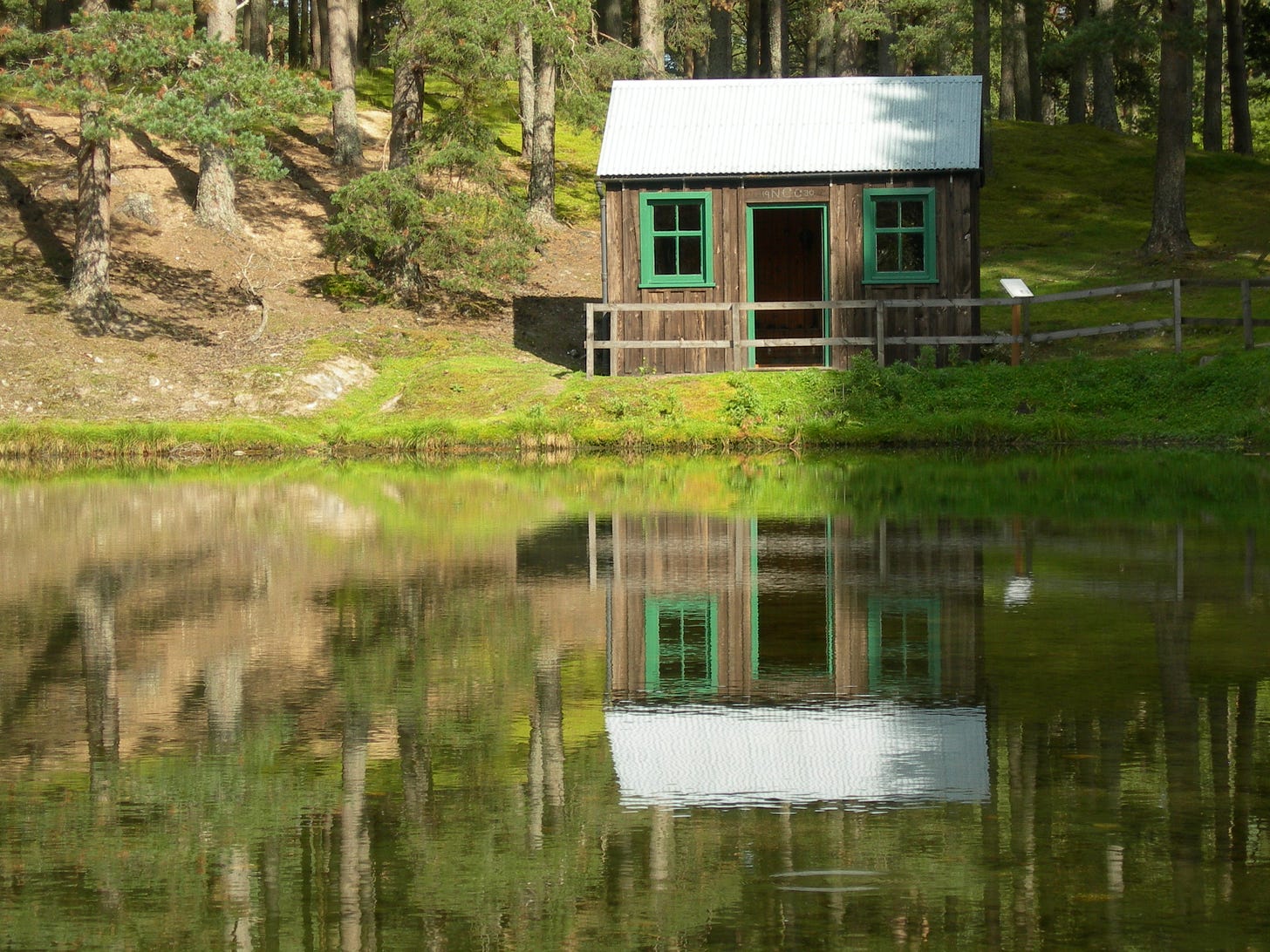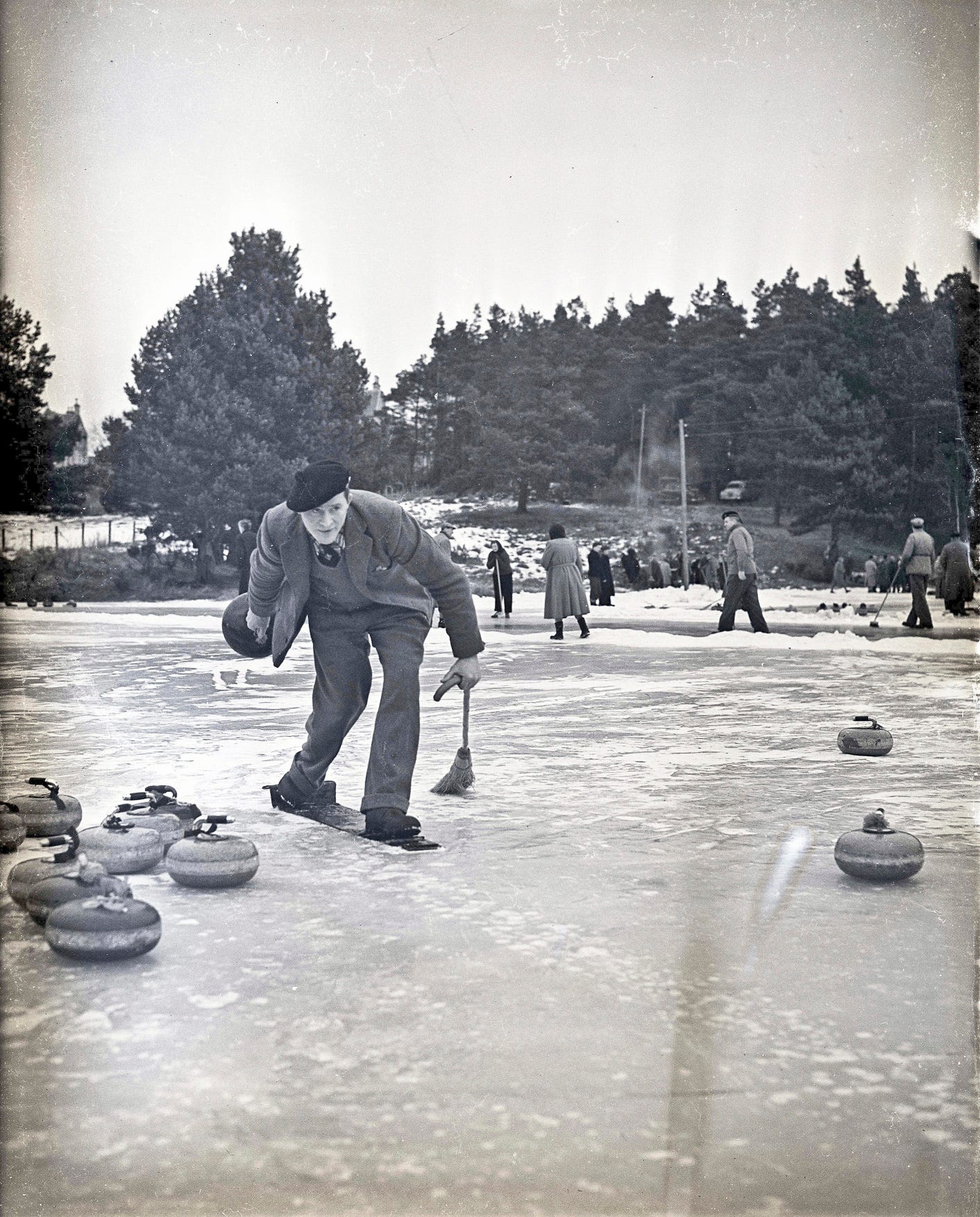
The origins of curling are unknown, but Scotland has had a long history with the sport, and it was Scots that took curling to the northern parts of the world such as Canada and Norway. John McQuhin recorded that in February 1541 a challenge which involves throwing stones across ice was played between a monk at Paisley Abbey and the relative of the Abbot. The game had became popular and widespread by the 1830s.
Curling was originally played on natural lochs, from where it got its nickname of “The Roaring Game”. When the curling stone skates across ice over deep water, the sounds produced are particularly loud due to the ice's excellent acoustic properties and the water beneath acting as a resonating chamber. Ice, being a crystalline solid, efficiently conducts sound, allowing noises to travel further and more clearly than through air or water. The deep water beneath the ice amplifies these sounds, as the space between the ice and the water layer can create a resonant acoustic environment. This amplification effect is enhanced by the large volume of the underlying water, which can act like a natural amplifier, making any sound produced on the ice's surface louder and more pronounced. This phenomenon turns the environment into a unique acoustic experience.
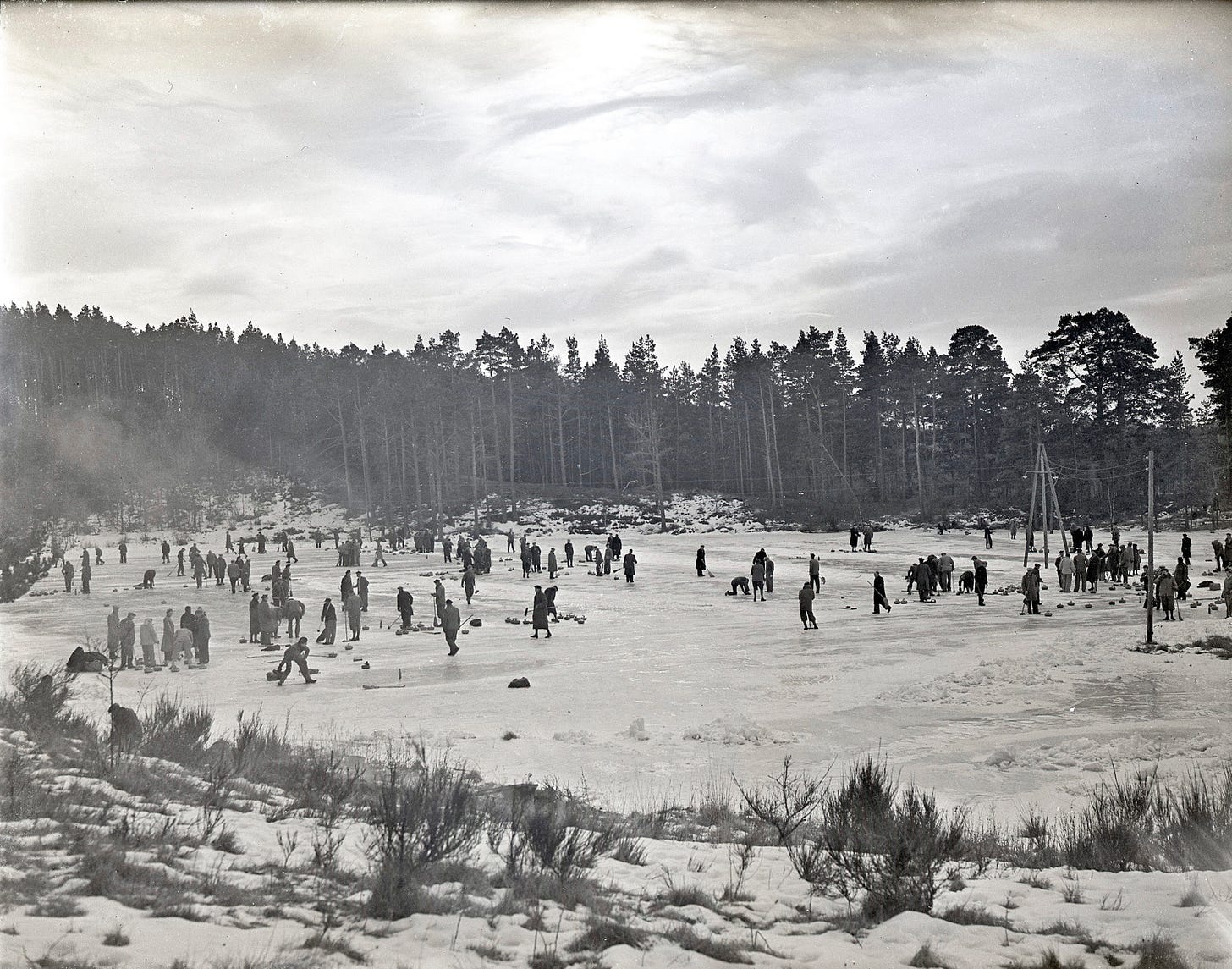
Development of the Curling Ponds
As curling slowly became more popular the environment became more refined and sophisticated and the game moved onto specially constructed ponds outside. The shallow depths allowed for more safe passage on the ice, and the game could be more reliably played throughout the winter months. There are several different types of managed outdoor curling ponds. Managed ponds included canals, mill ponds, fishponds, reservoirs, and ornamental ponds on large estates.
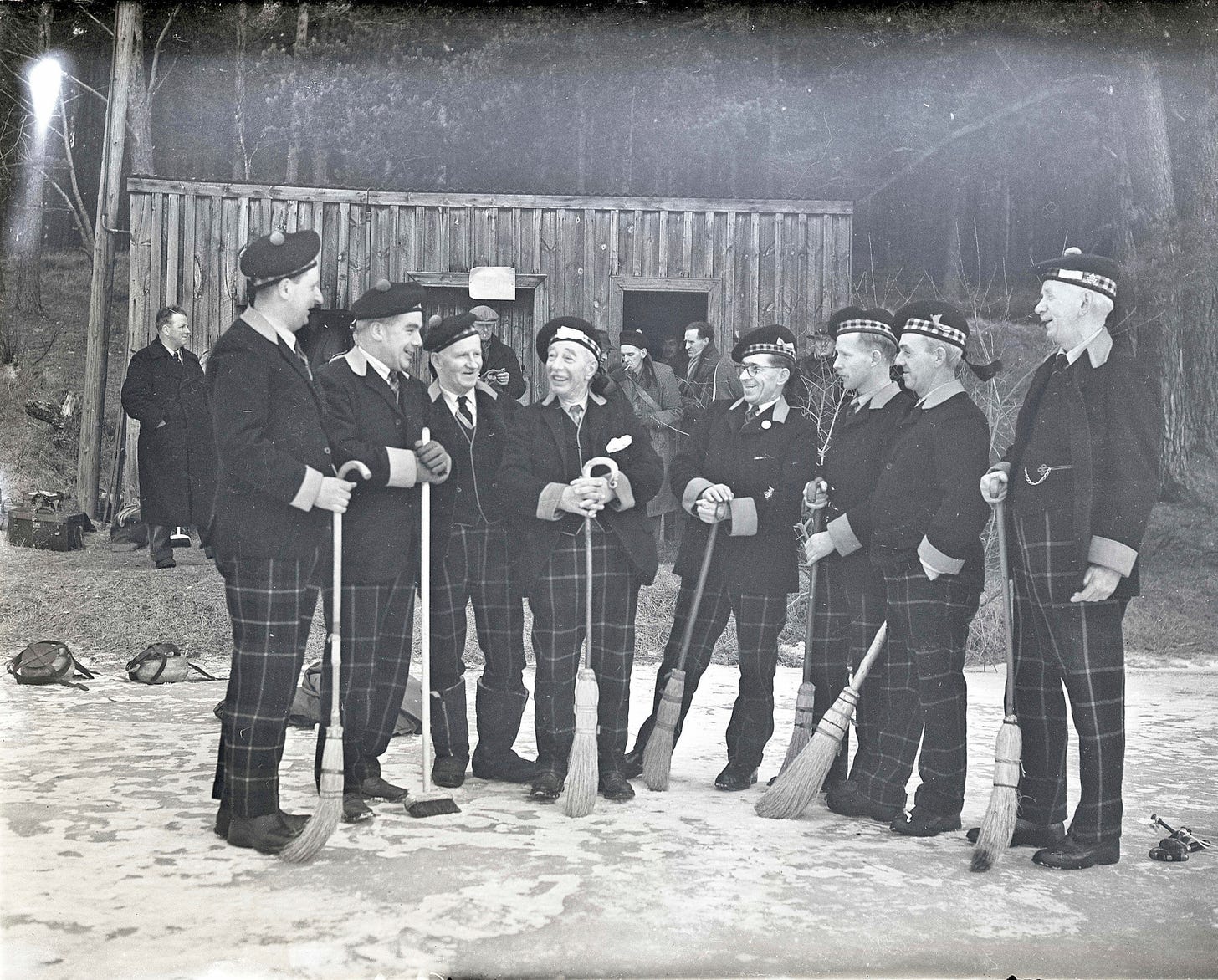
Maintained club ponds where often naturally shaped ponds with managed water intake and a sluice or drain, or regular shaped constructed club ponds with water intake and a sluice possibly with an embankment or dam. Cairnie style ponds were shallow pools with clay, concrete, cement, wood, bitumen, asphalt, tarmac or metal floors. The ones in Glen Nevis in the shadow of Scotland highest mountain, were built in the 1880s, hold a few centimetres of water.
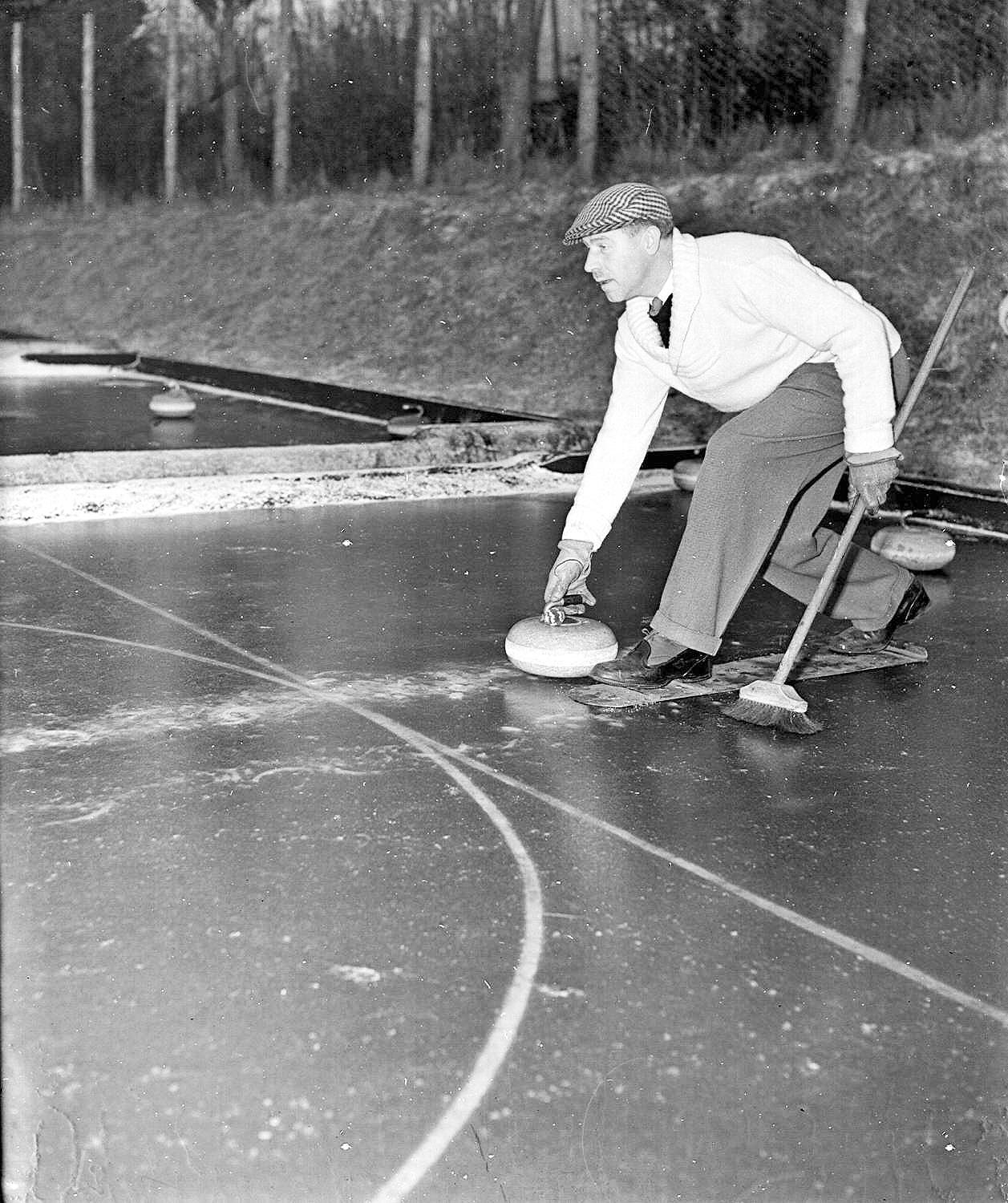
Tarmac rinks are known as sprinkle rinks, and date from the early 20th century. These rinks differ from the Cairnie style shallow ponds, in that unlike the Cairnie ponds which have a small border to retain water to a depth of a few centimetres which then freezes, Tarmac rinks only have a thickness of one or two millimetres and when laying these rinks they have to be perfectly flat whereas rinks with a few centimetres of water can find their own surface level.
Curling stones
Olympic curling stones weigh 20 kilogrammes and have a width of 278 millimetres and a height of 136 millimetres. Curling stones are traditionally made of granite. Some of the hardest and purest granite on earth is found on the small island of Ailsa Craig in the Firth of Clyde from where all Olympic curling stones come. The island of Ailsa craig, sits between Scotland and Ireland and is only 3.2 kilometres in circumference.
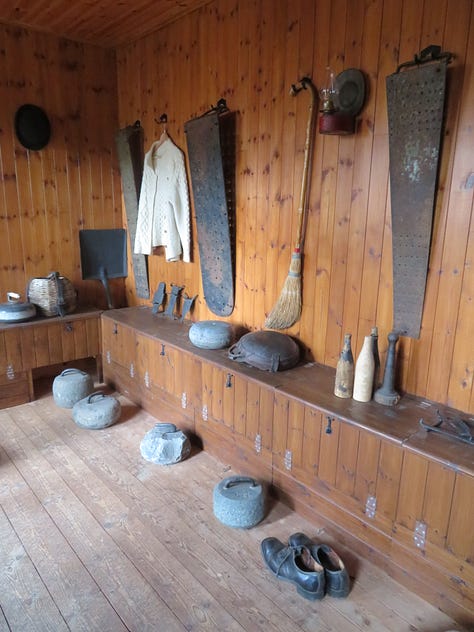
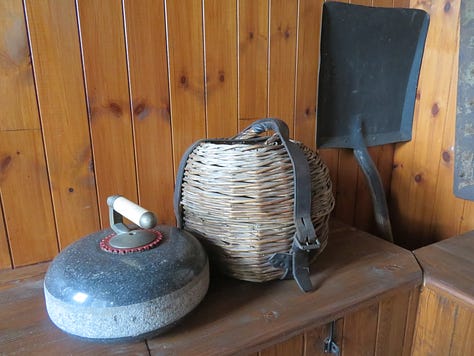
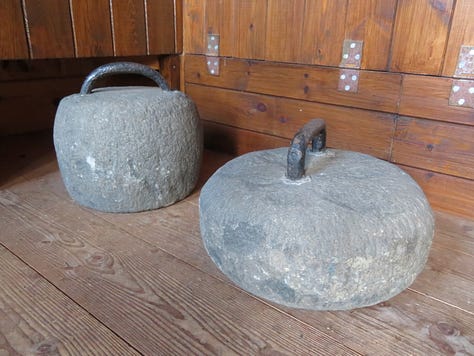
The granite on Ailsa Craig was formed during the Paleogene period, about 60 million years ago, a time of significant volcanic activity in the North Atlantic region. This activity was part of the opening of the North Atlantic Ocean as the Earth's tectonic plates moved apart. The specific granite type found on Ailsa Craig is known as "Ailsite," and it is particularly valued for its tight grain structure, which makes it highly resistant to weathering and very durable, ideal qualities for the manufacturing of curling stones. The island's granite is considered among the best in the world for this purpose due to its density and lack of porosity, which ensures the stones glide smoothly over the ice.
Indoor ice rinks first appeared in Southport and Manchester in the latter part of the 19th century with Scotland getting its first indoor rink in 1907 in Glasgow. Nowadays, curlers meet in indoor rinks almost exclusively to play. With this the roar went silent, curling stones on indoor rinks simply don't sound the same.

Curling, once a common winter sport that could be enjoyed by people of all ages throughout the Highlands has borne the brunt of warmer winters. The loss of winter ice has had a direct effect on the populatrity of the game and communities can no longer meet regularly. Young children rarely get the chance to try curling on the numerous ponds that existed, many of which have sadly fallen into disrepair. In recent years natural water bodies in Scotland are also no longer freezing to a depth point that allows for curling, a sign of the warming of our planet, so the roar has been silenced, in this country at least.
It is not just curlers that are displaced by the warming environment but many other species. As water temperatures rise dissolved oxygen reduces and this change in conditions may lead to local extinction of some species. While water in shallower curling ponds will dry up during the summer, they still provide some benefit for birds and animals by supplying a source of clean water for drinking and bathing and they will also be used by buglife. They are, however, an unsuitable habitat for amphibians or fish, as they are only a temporary water source.
Manmade ponds either built specifically for curling or built for another use and used for curling can be transformed into a great habitat for wildlife if they're well managed and the natural vegetation is allowed to establish both in and around the pond. The vegetation in the pond needs to be cleared regularly to prevent the pond from silting up and disappearing over time. Managing a pond for curling is infact a really good way to ensure open water is maintained both for wildlife and people.
The High Life Highland Folk Museum and High Life Highland Ranger Service are working together to do just this - as part of the Puddles to Ponds project this year. We have been successful with fund awards from both Cairngorm Trust and the Nature Restoration Fund to renovate the curling pond at the museum for increased biodiversity.
Read more about the puddles to pond project here:
Whilst we can't change the lack of suitable ice for curling on our Scottish ponds, we can help local freshwater habitats by taking a fresh look at those older curling ponds and renovating or creating new ponds in our communities for the benefit of nature.
We can also help preserve the history of the game of curling through recording the memories of local community members, noting where local ponds could be found and restored. There is also a Highlands heritage curling trail being developed as I write.
Curling is still being introduced to the young people throughout the Highlands today, in a slightly different format. This is currently being done through High Life Highlands Active Schools team, who are introducing floor curling in schools and village halls. Whilst this is no substitute for playing on traditional curling ponds it will certainly help to keep the traditional sport alive in the Highlands, for those with limited access to indoor rinks.
Michelle Melville is High Life Highland’s Heritage Ranger, is passionately dedicated to preserving Scottish natural and cultural heritage, through her commitment to mastering and teaching traditional Scottish Highland crafts. A skilled artisan, Michelle excels in a range of hand crafts from carving and weaving to stained glass creation and needle felting. Her talent in these crafts is not just a personal pursuit but a vital part of her role in engaging and inspiring communities. Michelle's deep connection with Gaelic culture and folklore enriches her engagement work, whilst initiatives, such as the celebrated ‘Lochaber Story Quilt’ are a testament to her dedication in promoting Scotland's rich cultural history, and preserving traditional crafting skills for years to come.




